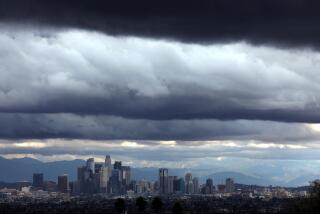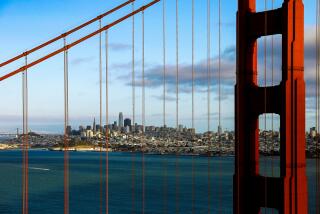First City No More As They Flee D.C.
- Share via
WASHINGTON — Inaugural crowds that temporarily swelled the capital’s population have gone home, leaving the District of Columbia in its normal state--a financially troubled place whose residents are leaving in droves.
A city of both splendor and squalor, Washington has fewer residents now than at any time since 1933, when Franklin D. Roosevelt’s New Deal spawned dozens of government agencies that drew legions of workers to town.
As recently as 1990, the District of Columbia was home to 607,000 people. Today, just 543,000 live here.
The Census Bureau’s figures show every state except Rhode Island grew last year as Washington’s population shrank.
The troubled district is even losing perhaps its most popular residents, the Washington Redskins, who play next fall in a new stadium springing up in the reddish soil of suburban Maryland--a sprawling symbol of the flight from Washington.
Unlike the National Football League team, the many others leaving Washington are being spurred on mainly by fears about crime and the city’s declining school system.
Realtors, demographers and politicians agree the “white flight” of decades past has been replaced by an unabated, multiracial departure of Washington’s middle class.
The situation has attracted the attention of the White House. It has proposed taking over the city’s courts and prisons, providing help to repair roads and bridges, and taking other steps to arrest the financial slide.
Local leaders say thanks, but it will take additional tax incentives--such as a lower federal tax on district residents--to staunch the flow of people out of the capital. They also have long argued in vain for a commuter tax.
“I know people are leaving because of crime, the sirens, the shootings,” Mayor Marion Barry said. “Some are leaving for educational reasons.”
Phil Dearborn, a demographer at the Greater Washington Research Center, said, “The district was once the primary place of residence for blacks, but now well over 50% of the region’s black population lives in the suburbs.”
The 1990 Census showed that two-thirds of the city’s residents were black, 30% white.
Demographer George Greer, who also has studied the capital’s population loss, found that 51% of those who moved out from 1985 to 1990 were white, 44% black.
“When people have kids, or expect to, they move out,” said Greer. He calls the failing public schools “a great equalizer” that affects far more families--black and white alike--than does crime.
Where do most people go?
Since 1980, more than 92,000 Washingtonians have moved to Prince George’s County, Md., and turned it into one of the most prosperous black-majority counties in the country.
Prince George’s is “sucking the life out of this city,” said Robert Hainey, a City Council aide.
Redskins owner Jack Kent Cooke struggled mightily to find a way to keep his team in Washington, but ultimately also decamped for Prince George’s when he couldn’t cut a deal with City Hall to replace 30-year-old RFK Stadium.
In far more private ways, thousands of others, fed up with poor schools, rising crime and spotty services, are doing the same.
“We were looking for better schools, and a government that was a bit more reliable in terms of assuring a viable quality of life,” said David Keating, a federal computer analyst who recently moved to Silver Spring, Md.
Keating misses the monuments, museums, eateries and jogging to work from his old apartment downtown. But he and his wife, Elizabeth, a Justice Department attorney, are planning to start a family.
“D.C. is like a Disneyland for adults,” said Keating. For those with kids, “it’s not that great . . . unless you can afford to pay for private schools.”
More to Read
Sign up for Essential California
The most important California stories and recommendations in your inbox every morning.
You may occasionally receive promotional content from the Los Angeles Times.











